Transparency, Opalescence, Opacity: Clarence Van Duzer By Douglas Max Utter
The best story a painter has to tell may be the one that can’t be told, the tale woven into the work. It usually begins in childhood with a flood of precocious drawings, continuing through decades of lines, brushstrokes, and evolving styles.
But the story that can be told is often well worth hearing, and like many artists Cleveland’s Clarence Van Duzer is a better than average raconteur. During a recent conversation I learned about his life growing up near the West Side Market and studying art at the then famous West Tech High School guided by an extraordinary pair of teachers, Paul and Jean Ulen. Under their tutelage the young Van Duzer made art six hours a day for three wonderful years (“You learned to sharpen your pencils and throw away your erasers”). At the end of that time he went on first to the Cleveland School of the Arts (as the Cleveland Institute of Art was then called), and to the Cranbrook Academy of the Arts in Michigan for special study. He earned his Master of Fine Arts degree at Yale in the mid 1940’s with the help of a Gund scholarship, later teaching drawing at the Cleveland Institute of Art from 1957-1989.
When I first met him his shoulder-length snow-white hair, setting off an elegant arc of nose, would have reminded any art history buff of Leonardo Da Vinci’s famous self- portrait. At that time a retrospective show of Van Duzer’s paintings was on view at Michael Wolf’s gallery on East 40th Street in Cleveland. Hung salon-style, the exhibit featured work dating from the 1940’s on to the present. A wider local audience would recognize Van Duzer’s large, aerodynamic abstract steel sculpture commissioned for the Cleveland Hopkins Airport in the late 1970’s; yet much of his best work is on a more modest scale, executed in delicate layers of glowing egg tempera on panel. Especially striking at the Wolf’s show were several semi-abstract tempera and oil depictions that revisited the central scenes of Christian iconography, exploring mysteries of death and rebirth. Executed in deep umbers and beautifully applied gold leaf these paintings from the late 1950’s succinctly narrow the gap between medieval and modern sensibilities as they comment on abiding facts of the human condition. Yet for the artist himself the focus is always on technique. Asking about those paintings I came away from our recent conversation with a working knowledge of egg tempera application and how to prepare gesso on panel by rubbing it with an oak block And as he told me, “The basis of my work even now is the fundamental value of under-painting -- of transparency, opalescence, opacity.” After that show Van Duzer (who is now 86) went on to create a series of bigger, wonderfully energetic abstract oil paintings, shown last year at gallerist Alenka Banco’s Convivium 33 showcase at Josaphat Arts.
Artistic ability very often runs in families. Clarence’s brother William was also a brilliant painter. But there were two other children in the family and during the Depression years Bill put a promising career on hold to get a job in a lithography studio. Later he ran his own advertising firm for almost four decades. A true artist, he kept producing portraits during all those years, exhibiting them in the Cleveland Museum of Art’s annual May Show.
Anyone might propose their own list of “important” Cleveland artists, and no doubt any such list would end in an argument. But that Clarence Van Duzer has earned his place on the basic short list is beyond dispute.
Born – Pittsburgh, PA 1920
Education
MFA, 1947, Yale University School of Fine Art, New Haven, CT
BS, 1945, Case Western Reserve University, Adelbert College, Cleveland, OH
Four Year Certificate of Graduation 1939-41, 1943-42 Cleveland School of Art (Institute)
Studied Advanced Painting under Zoltan Sepeshy, Cranbrook Academy of Art 1941-42
Teaching Experience
Cleveland Institute of Art—Professor Emeritus 1947-48, 1957-89
Flint Institute of Art, Museum and School of Art—Director 1952-57 Flint, MI
University of Denver—Professor—Graduate Painting 1949-52 Denver, CO
Awards and Scholarships
Edwin Austin Abby Memorial for Mural Painting 1945
Agnes Gund Memorial for Advanced Study 1945
Tupperware National Competition – 1st prize and purchase 1952
Pepsi Cola National Competition – Pruchase Prize and reproduction 1948
Prix de Rome National Competition – Bronze Medal 1947
West Technical High School Hall of Fame 1984
August 2, 1980 Proclaimed C.E. VanDuzer Day by Mayor Anthony Sinagra
City of Lakewood, Ohio – Lakewood Arts Festival
Southwest Art Association – Selected as one of three artists in the United States to create a mural proposal for the First National Bank of Tulas, OK – Reproduced in LIFE magazine March 3, 1950
Exhibitions and/or in the Collection of:
Cleveland Museum of Art, 1939
Chicago Art Institute, 1942
Detroit Institute of Art, 1941, 43, 46, 52
National Academy of Design, 1942, 48
Carnegie Museum of Art, 1949
Milwaukee Art Institute, 1948
Des Moines Art Center, 1948
Butler Institute of American Art, 1948, 49
Joslyn Memorial, 1950
Fine Art Center, Colorado Springs, 1950, 51
Denver Art Museum, 1949, 50, 51, 52
Phillbrook Museum of Art, 1950
Dallas Museum of Art, 1952
Cranbrook Academy, 1952
Cleveland Institute of Art, 1947, 48
Cedar City Art Gallery, Cedar City, Utah 1950, 51
Orlando Museum of Art
Flint Institute of Art, Flint, MI
Cincinnati Art Museum, Cincinnati, OH
Works by Clarence Van Duzer
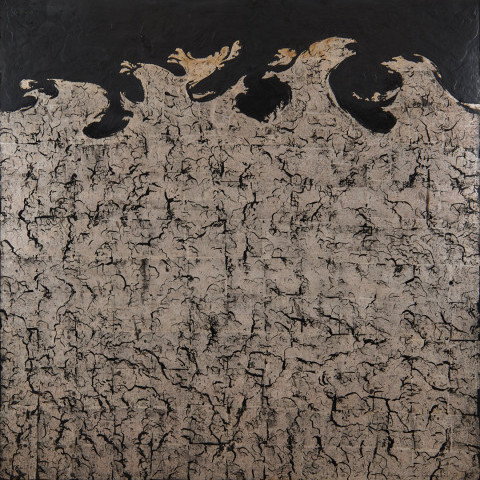
The Sea, c. 1950 Clarence Van Duzer
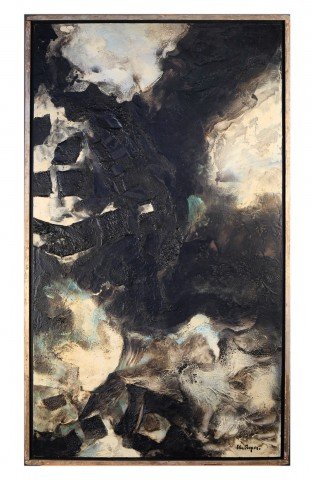
SOLD
Rocks and Water Clarence Van Duzer
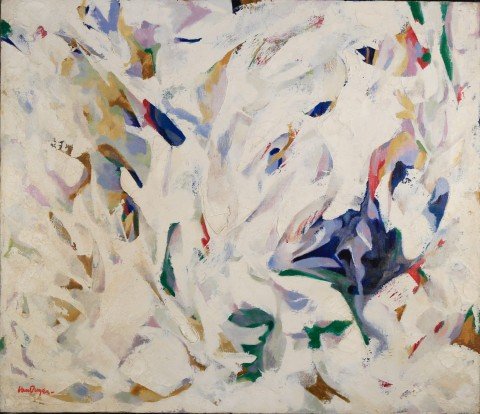
SOLD
Trout Stream Clarence Van Duzer
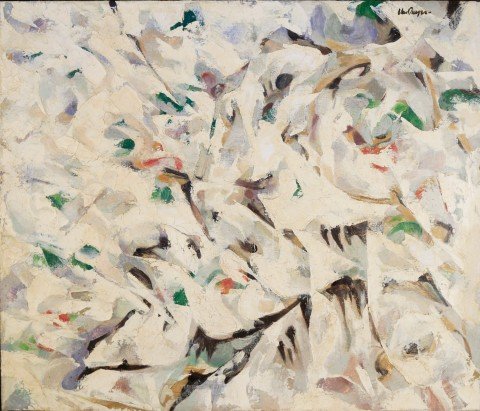
SOLD
Spring Thaw Clarence Van Duzer
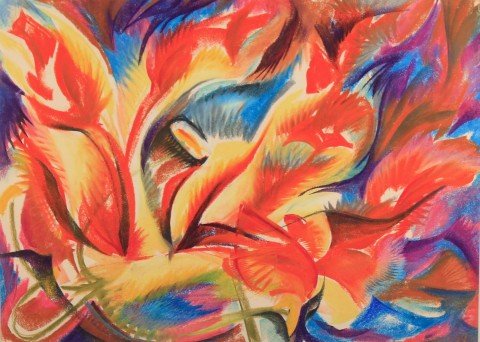
SOLD
Flower Composition, c.1950’s Clarence Van Duzer
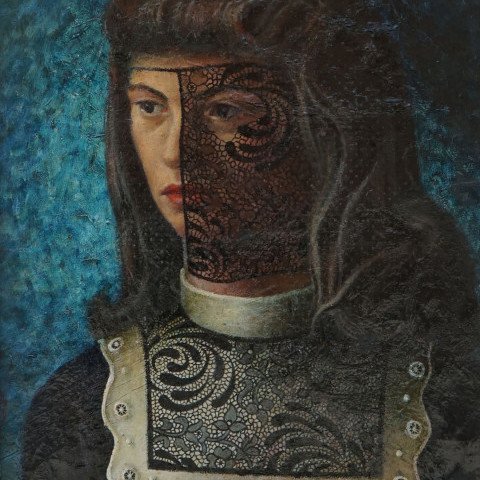
SOLD
Woman With Veil, c. 1940 Clarence Van Duzer
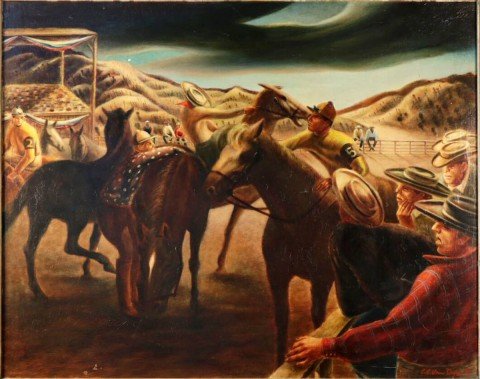
SOLD
Before The Race, 1942 Clarence Van Duzer
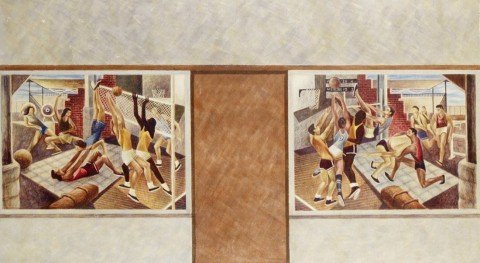
SOLD
Physical Education, 1945 Clarence Van Duzer
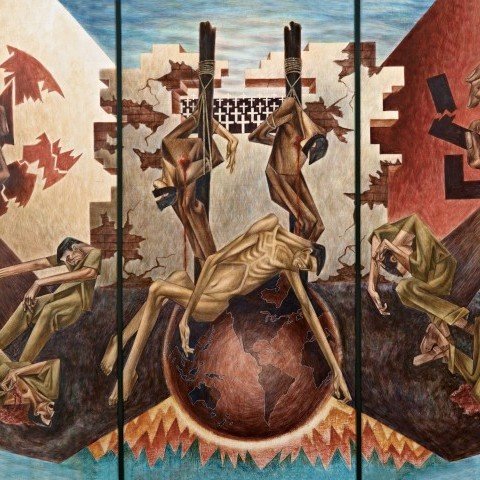
SOLD
Anti-Fascist Triptych, 1945 Clarence Van Duzer
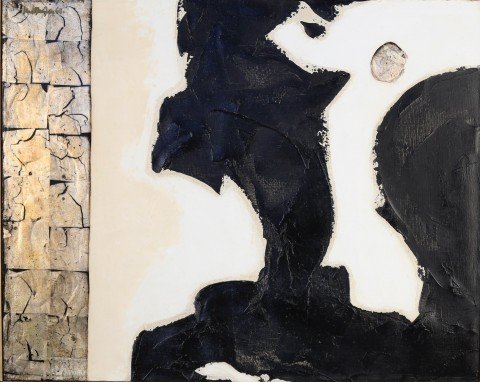
SOLD
White Lead Series, Untitled, 1957 Clarence Van Duzer
